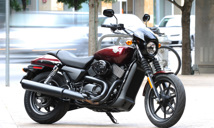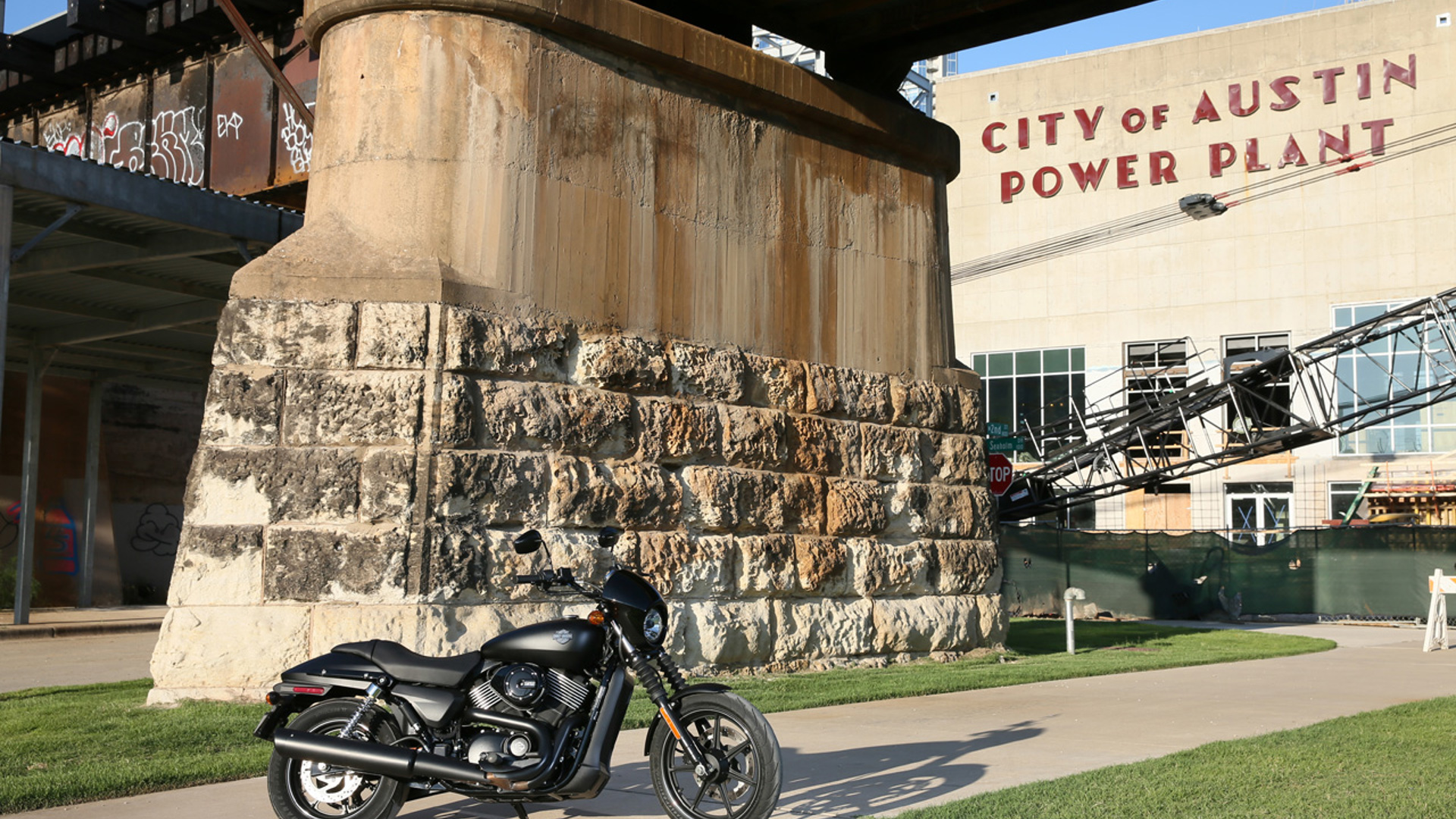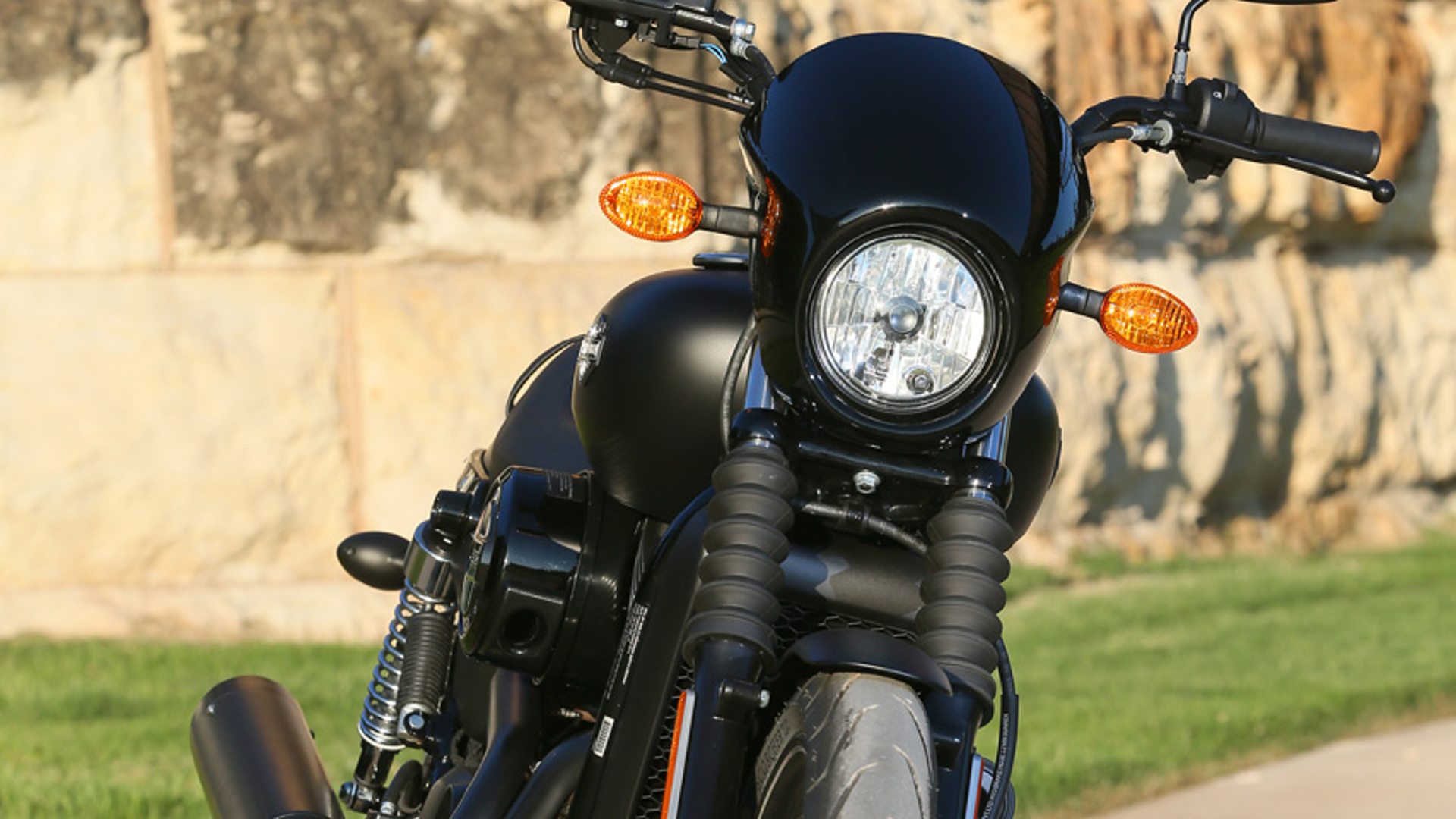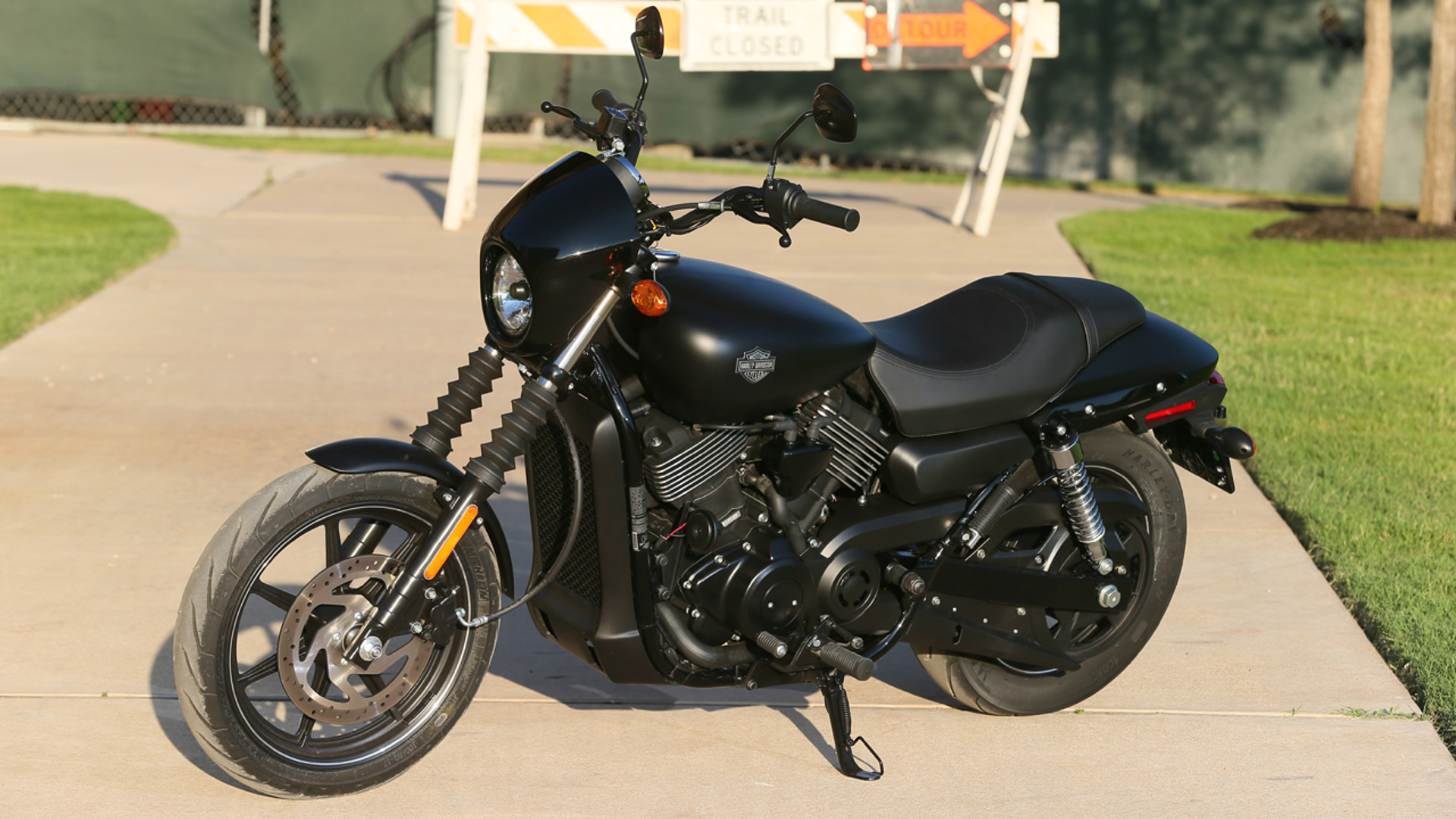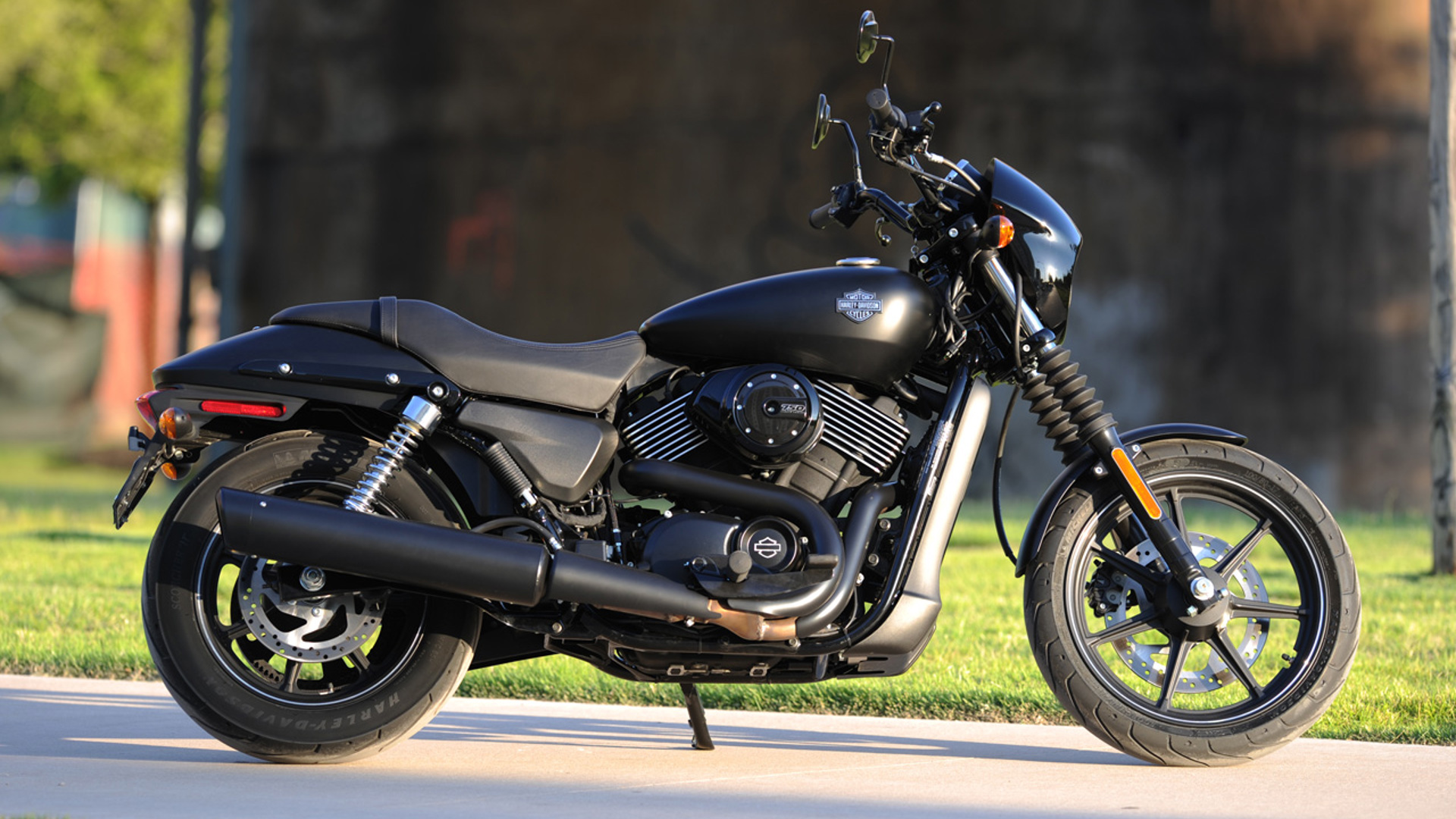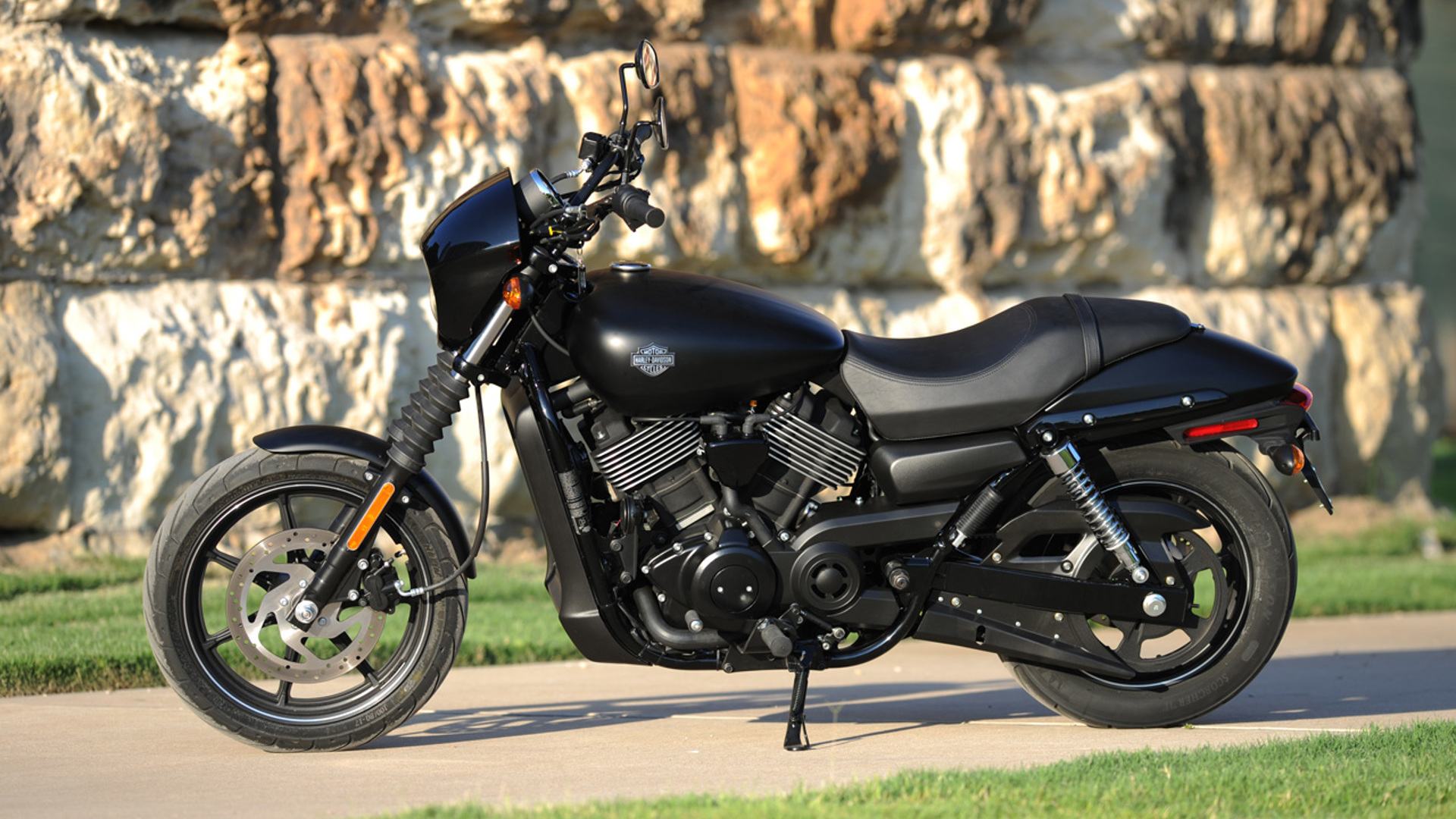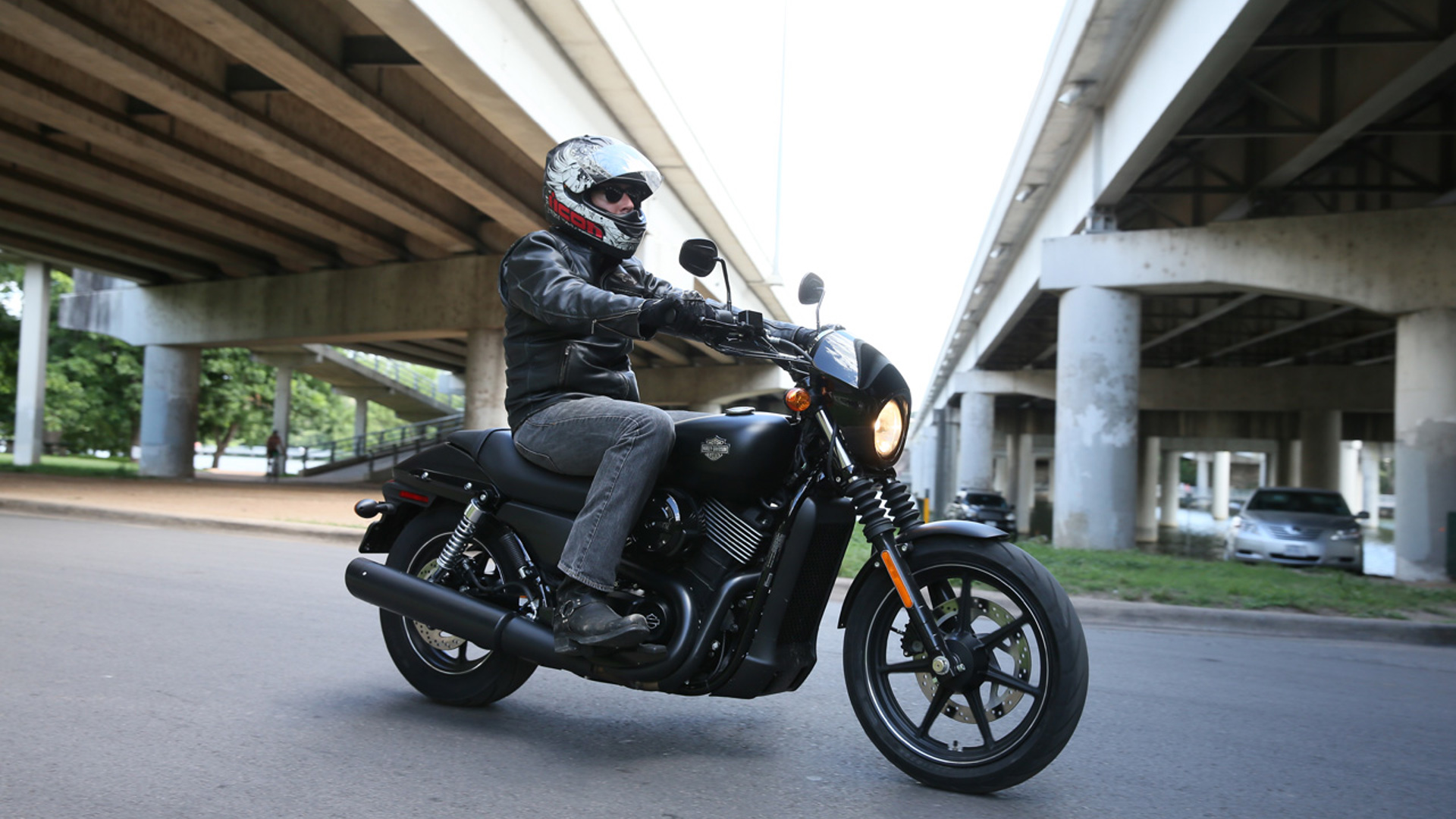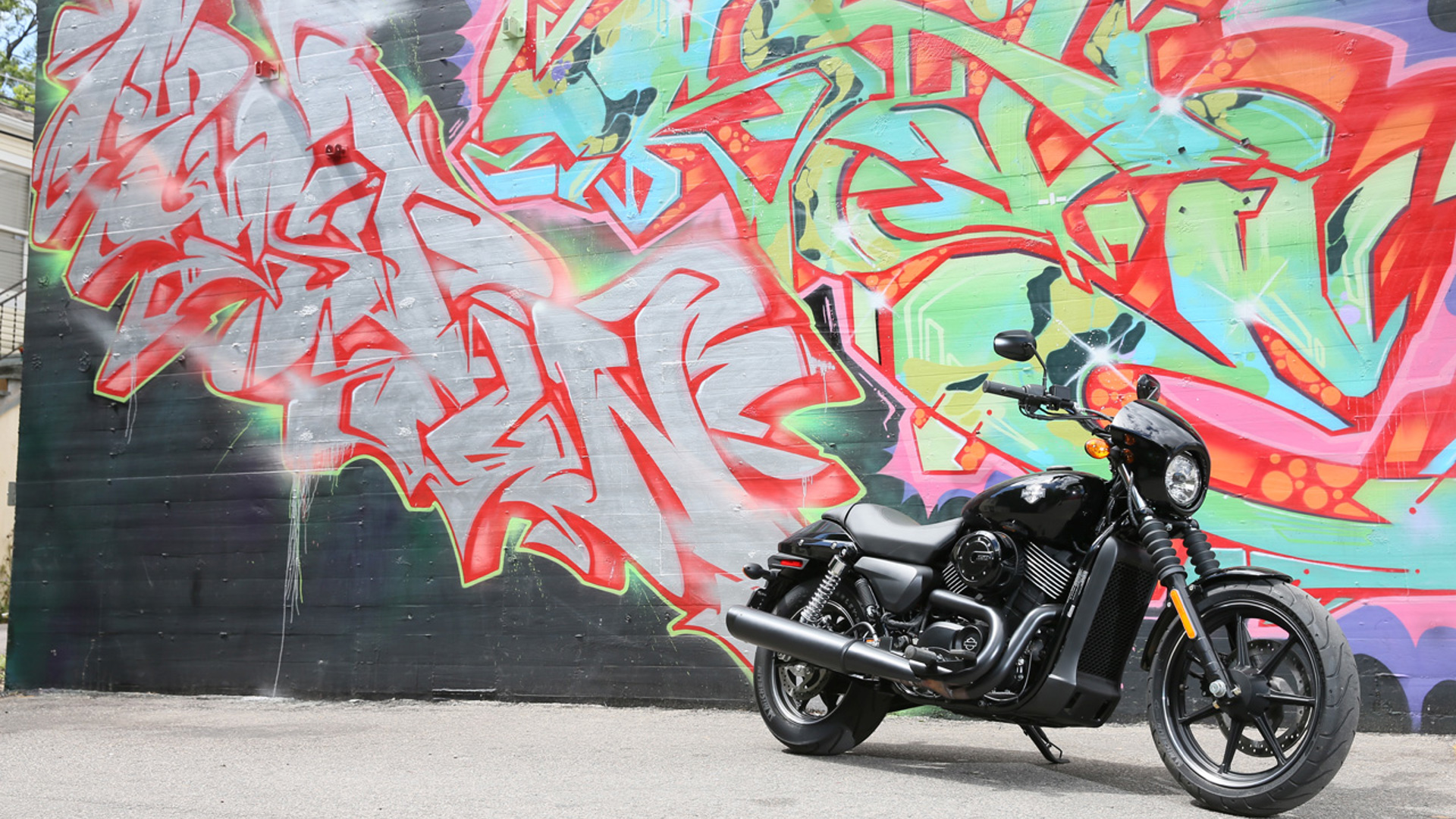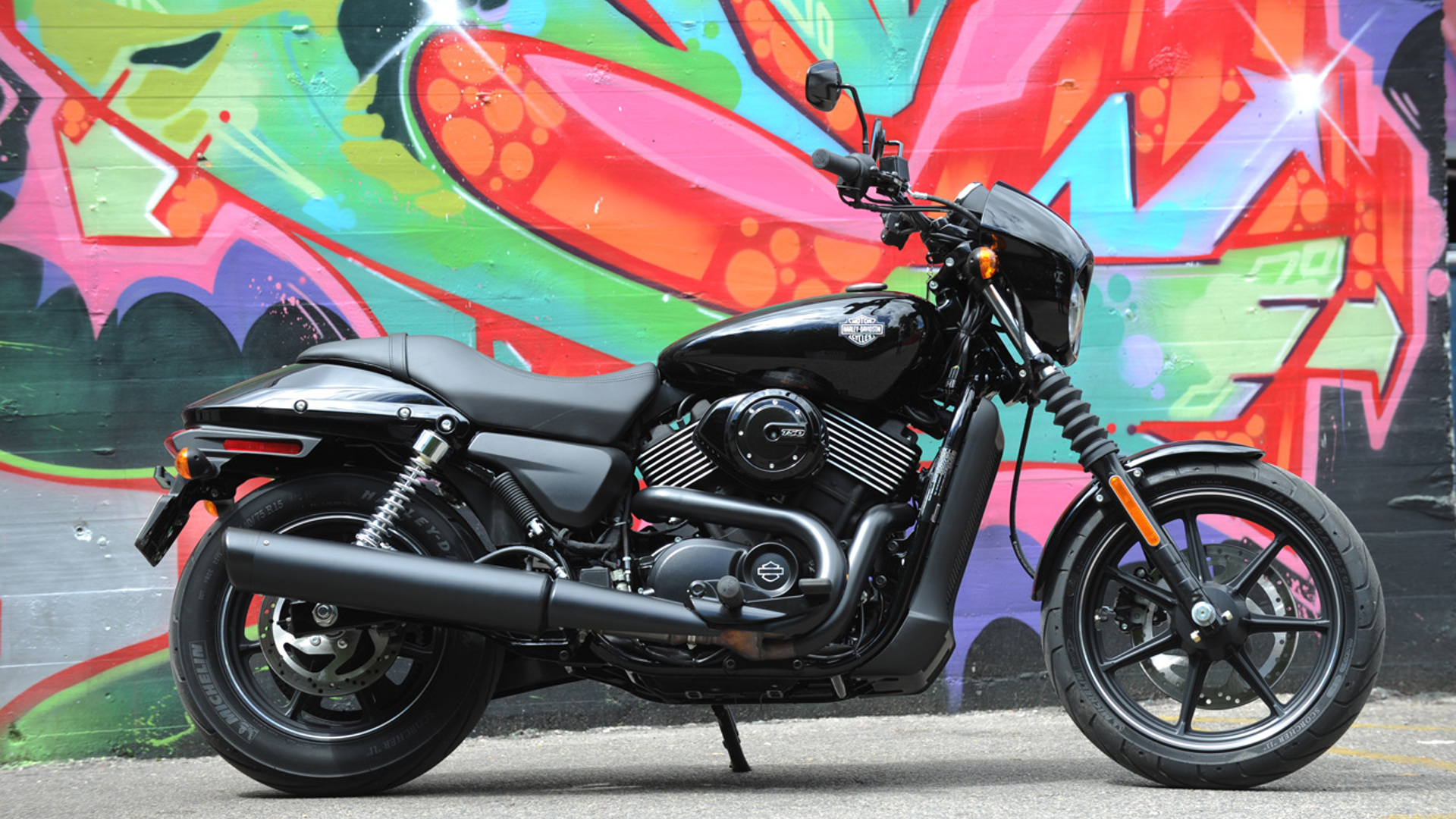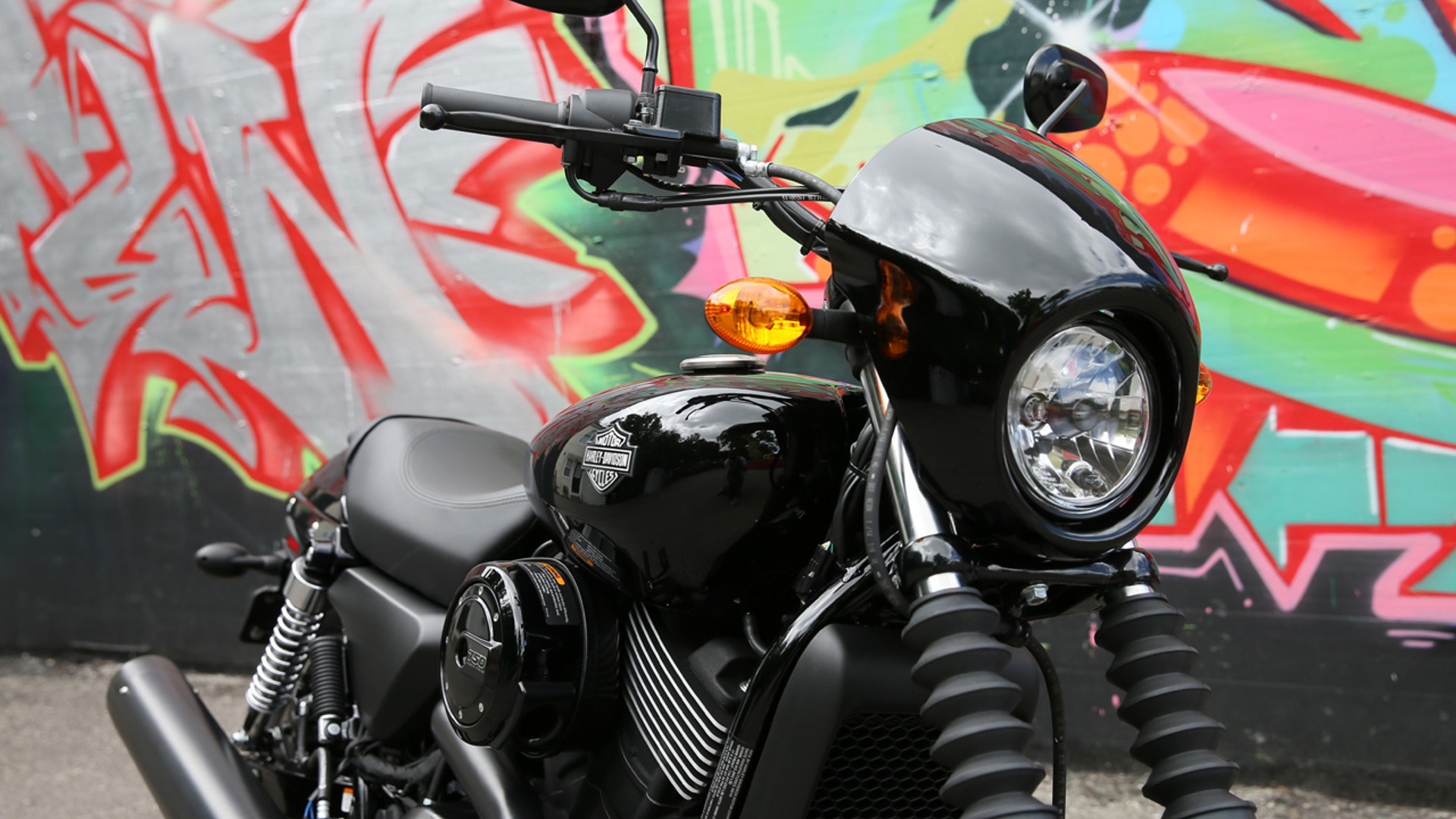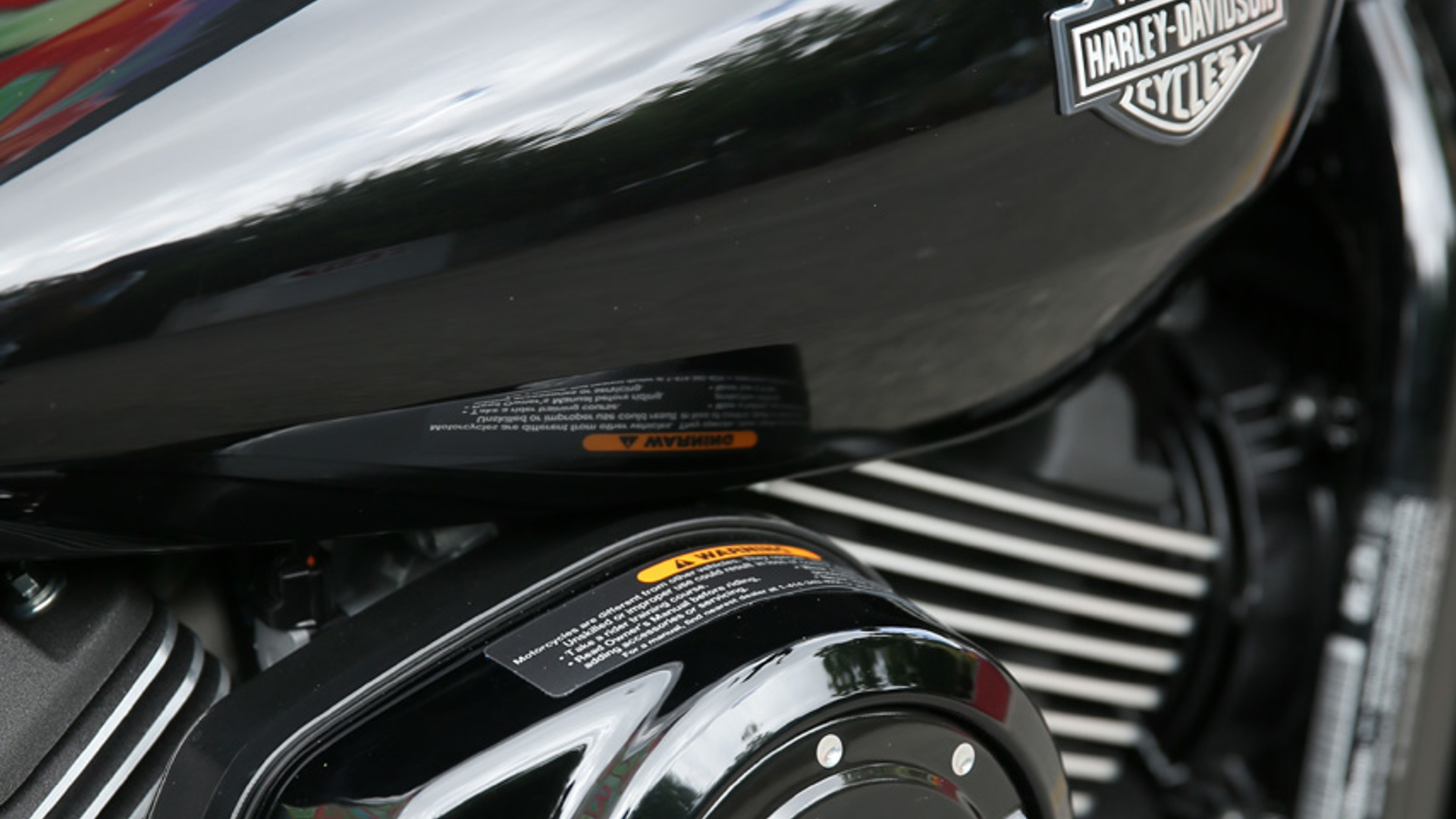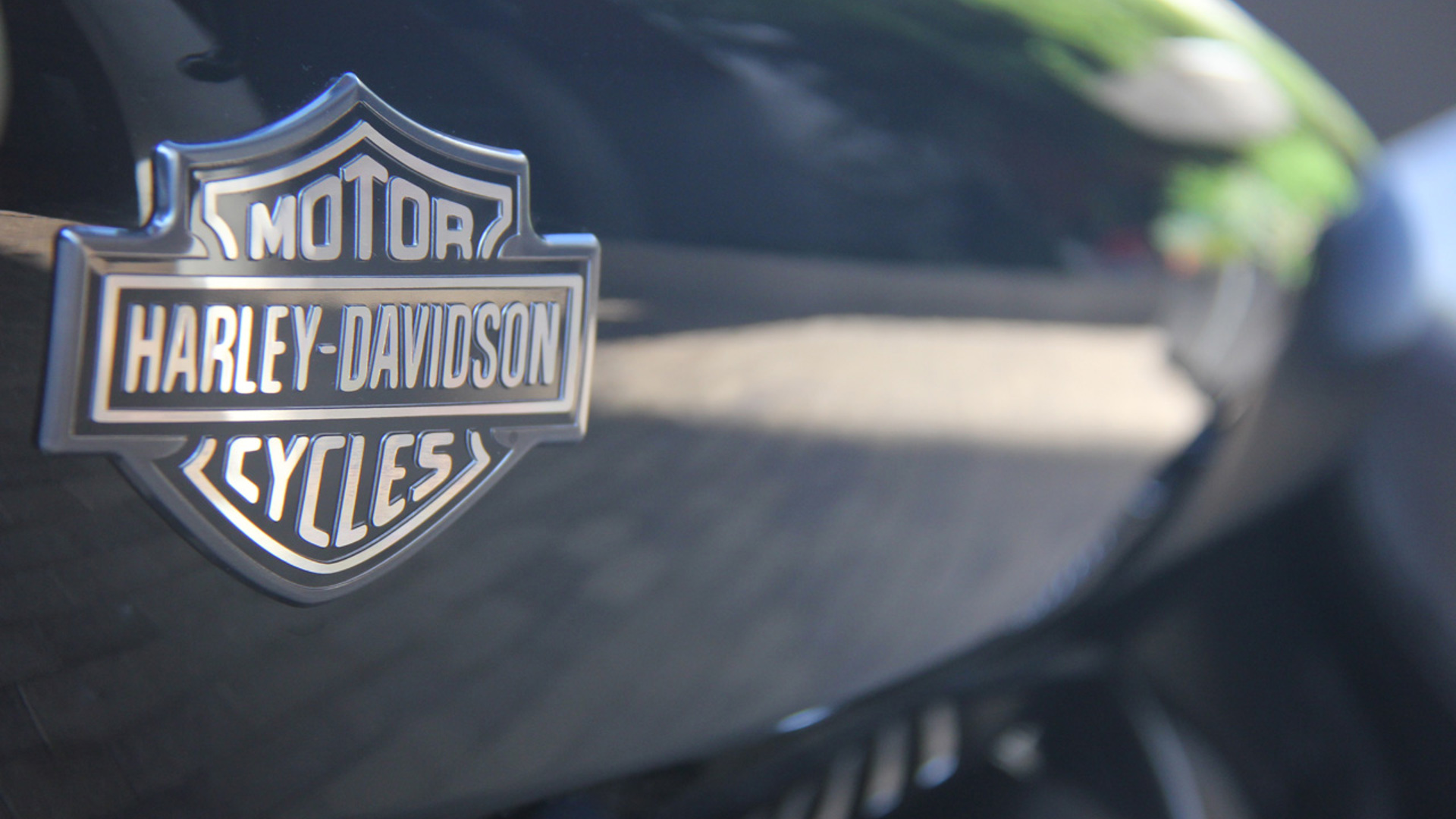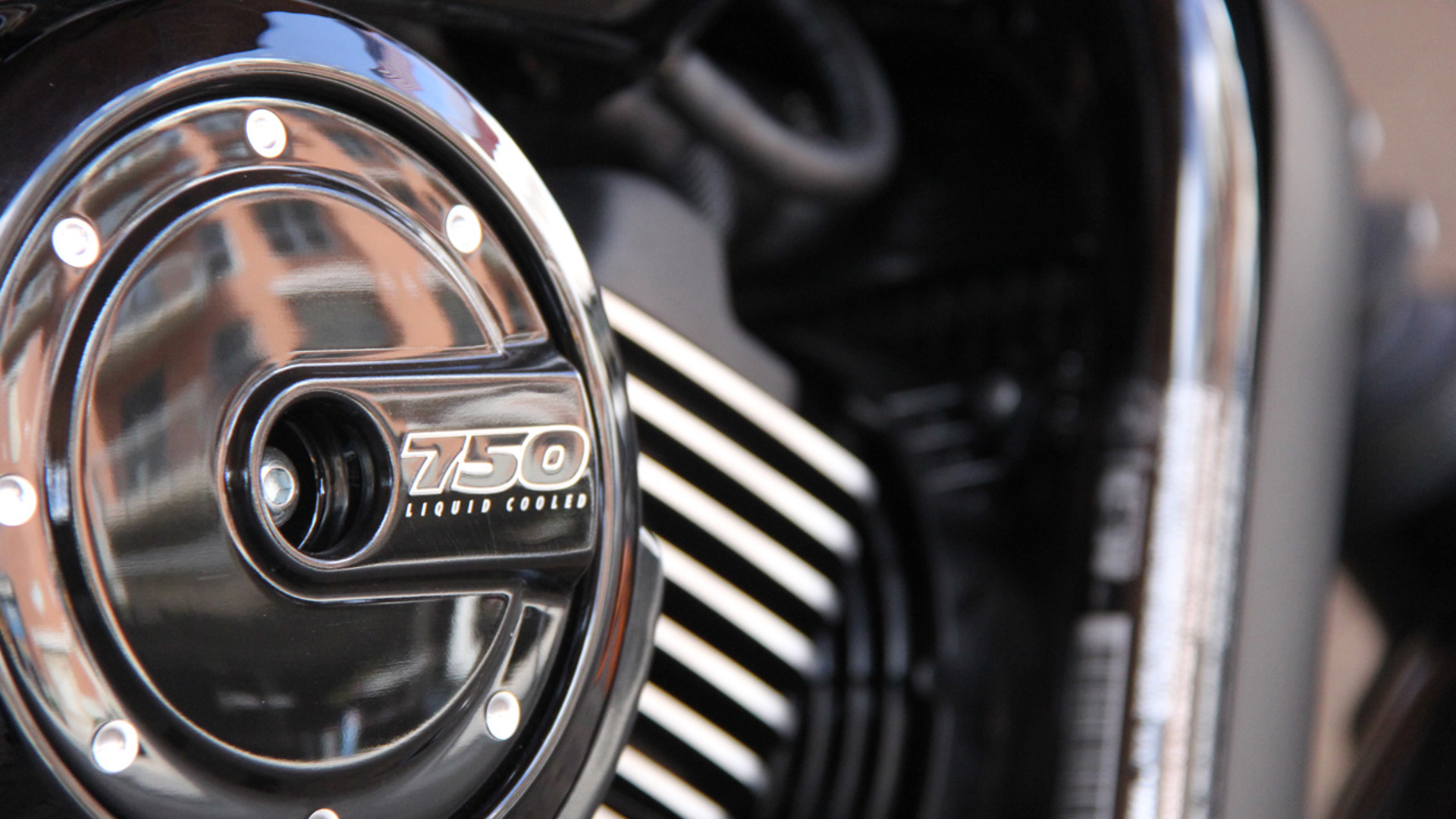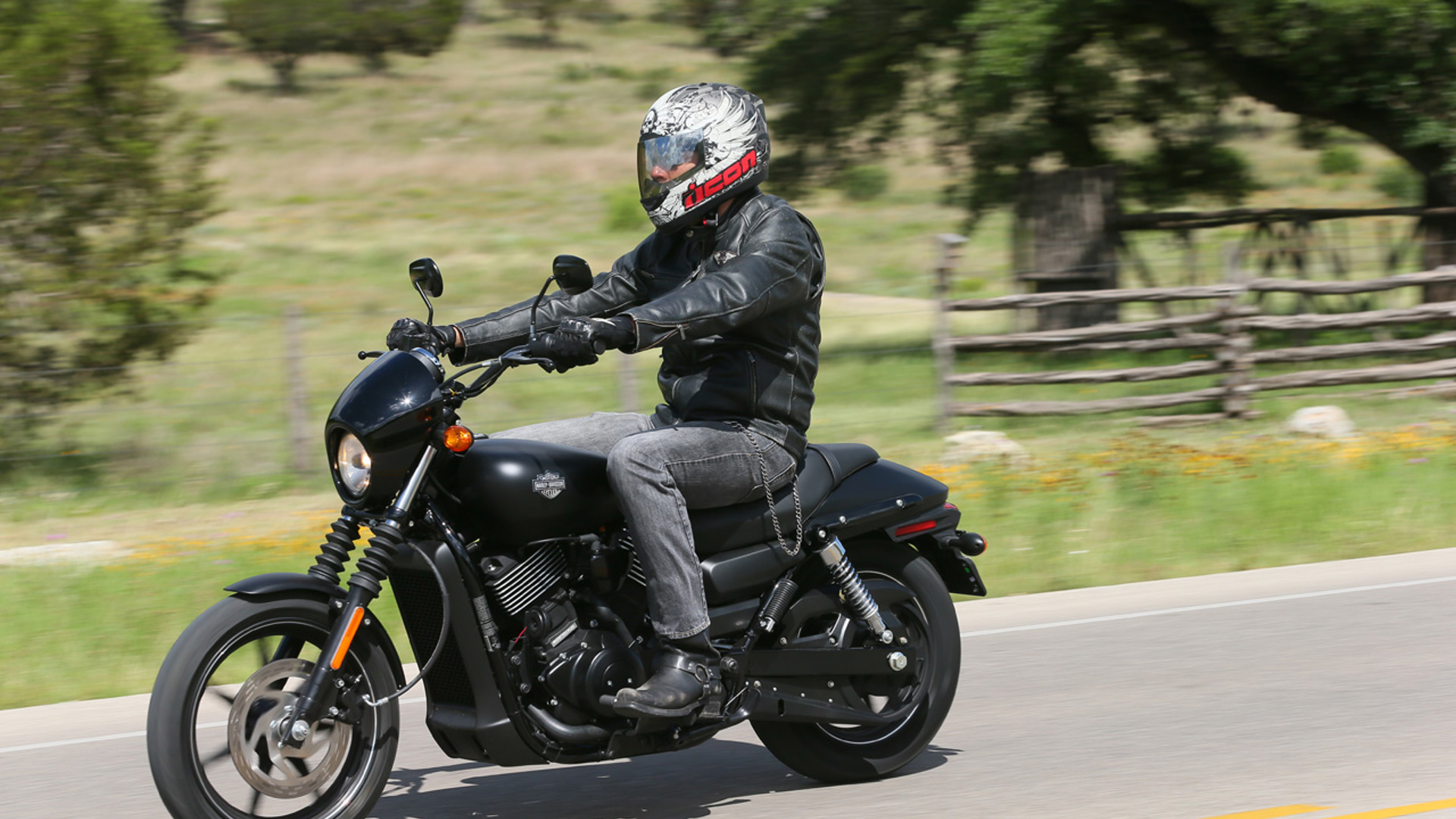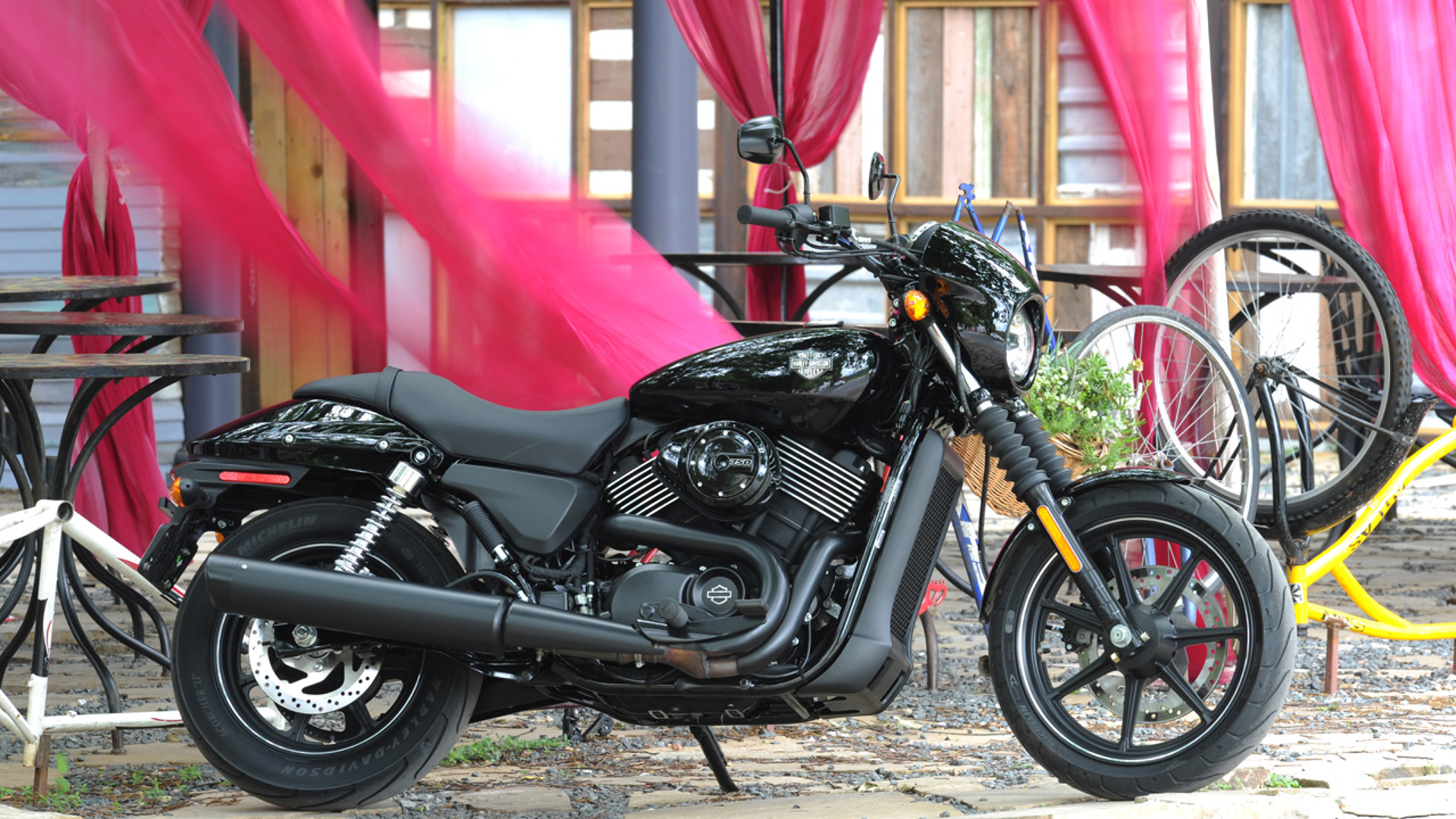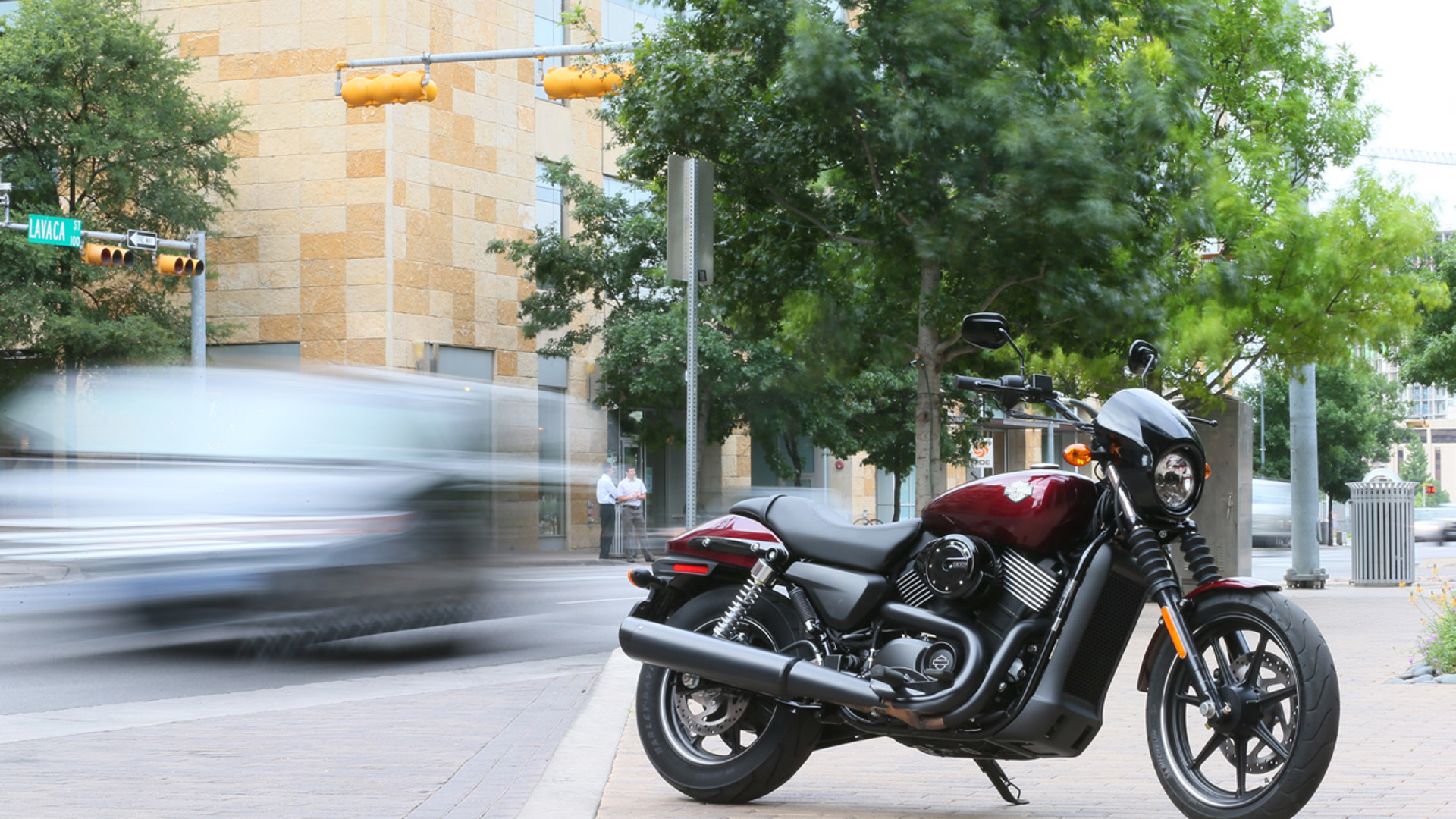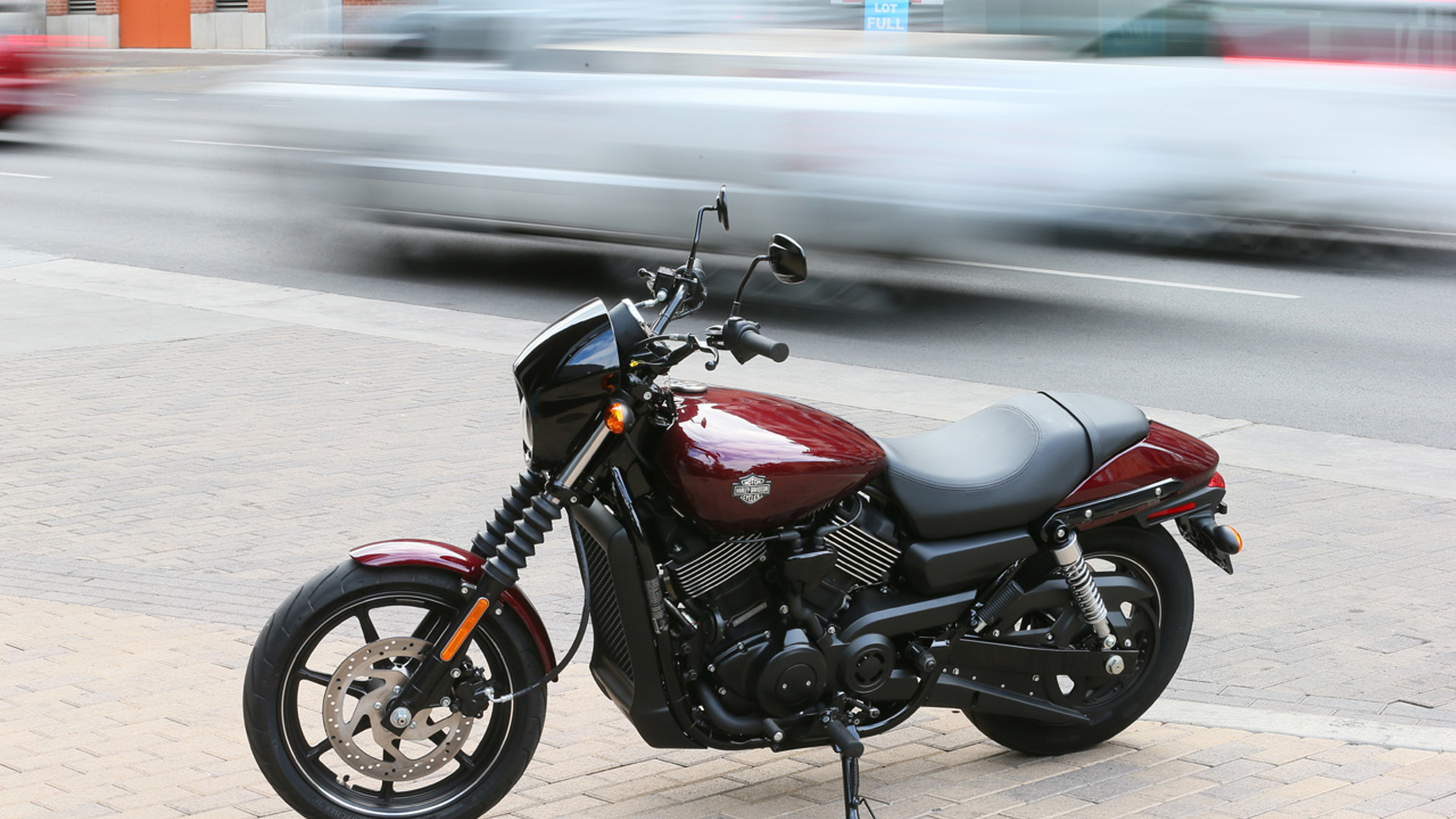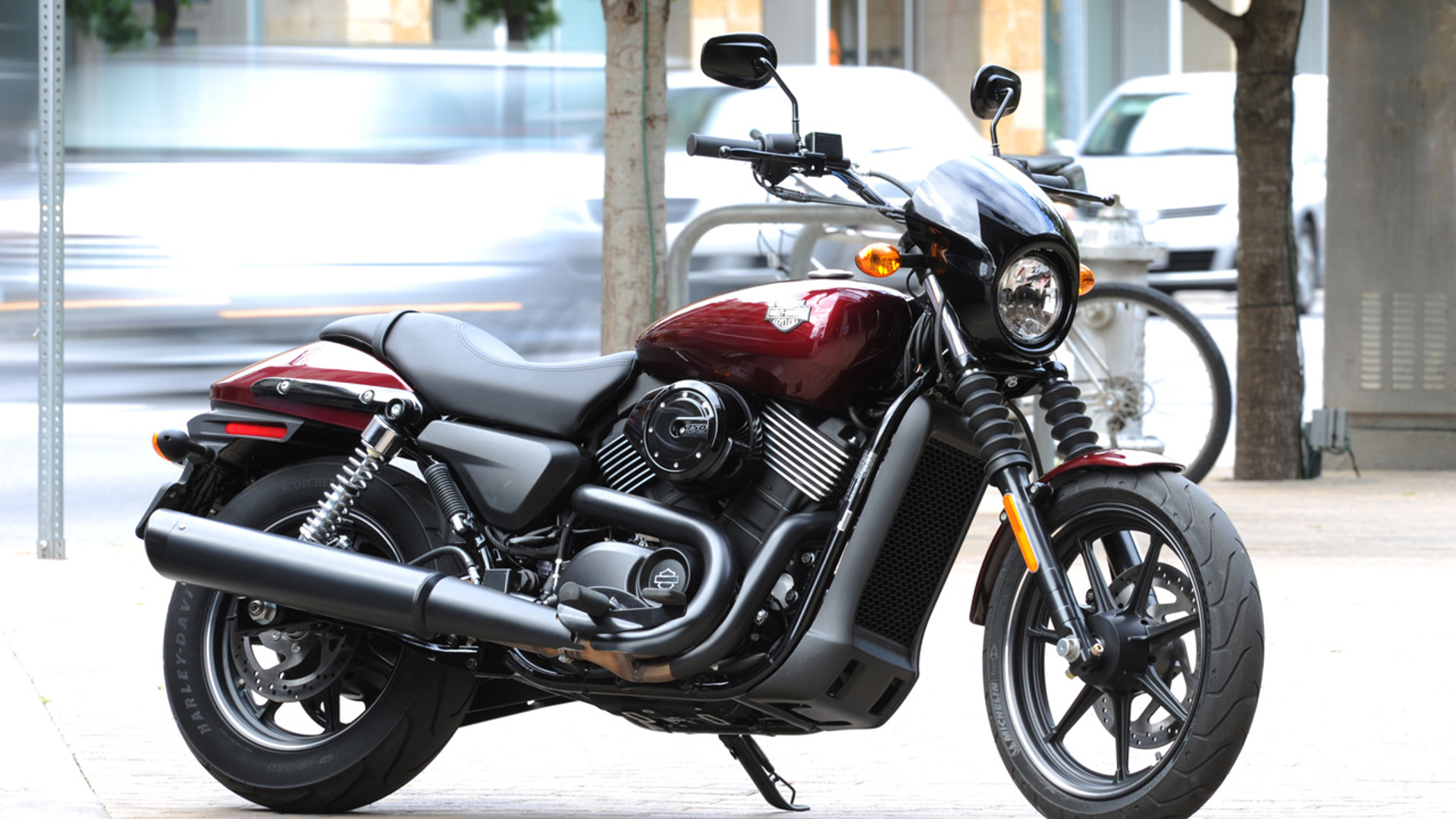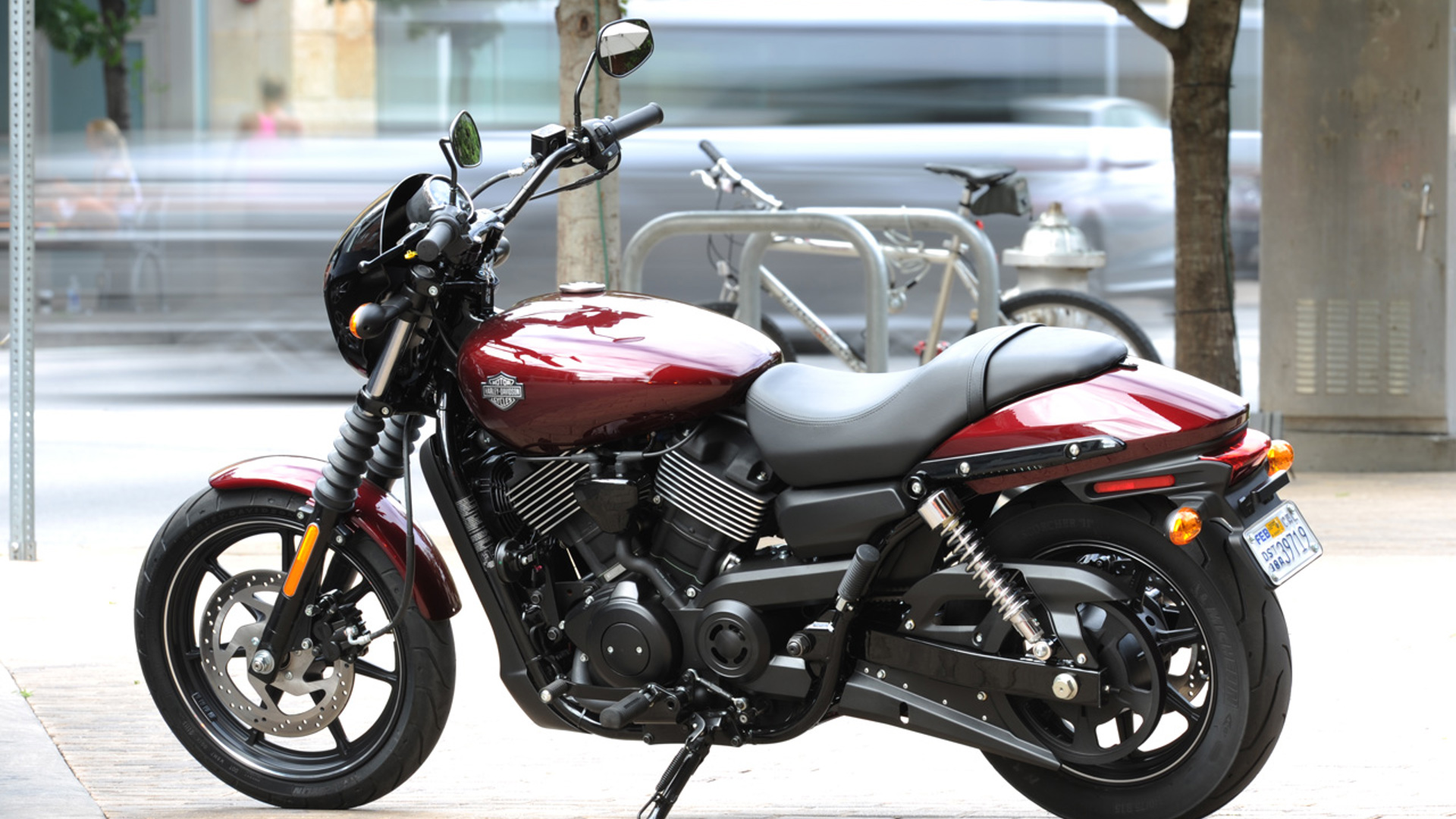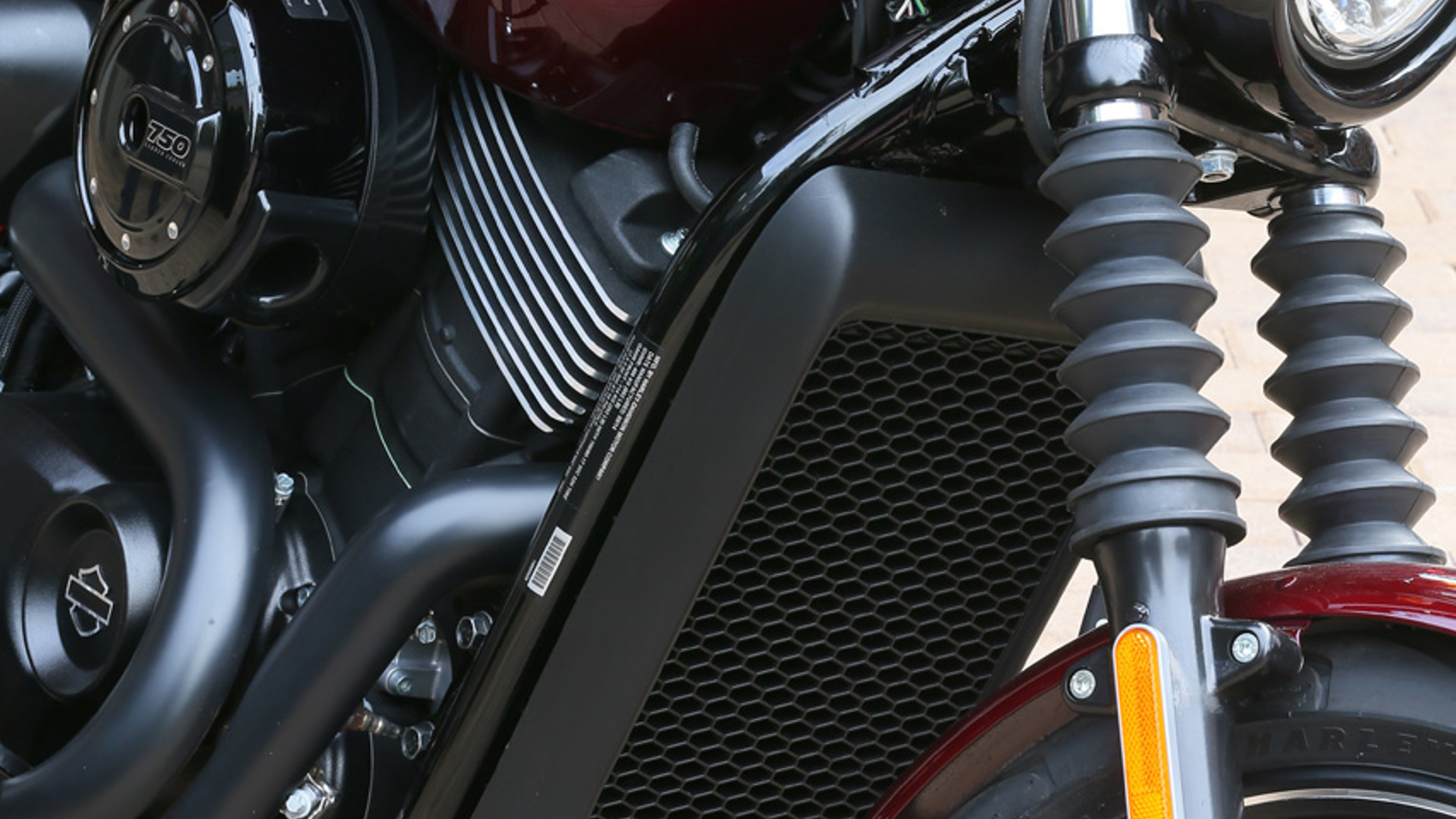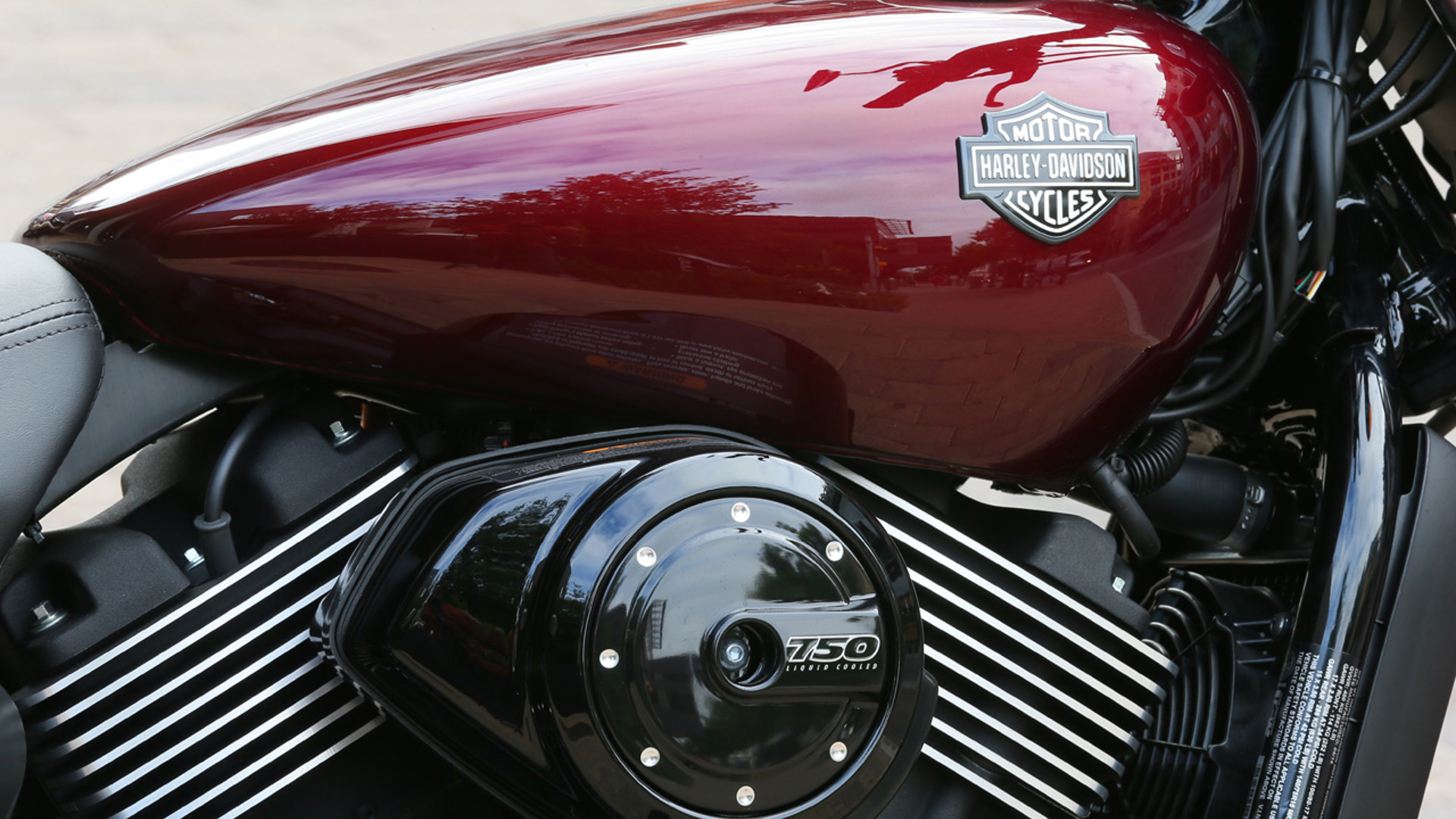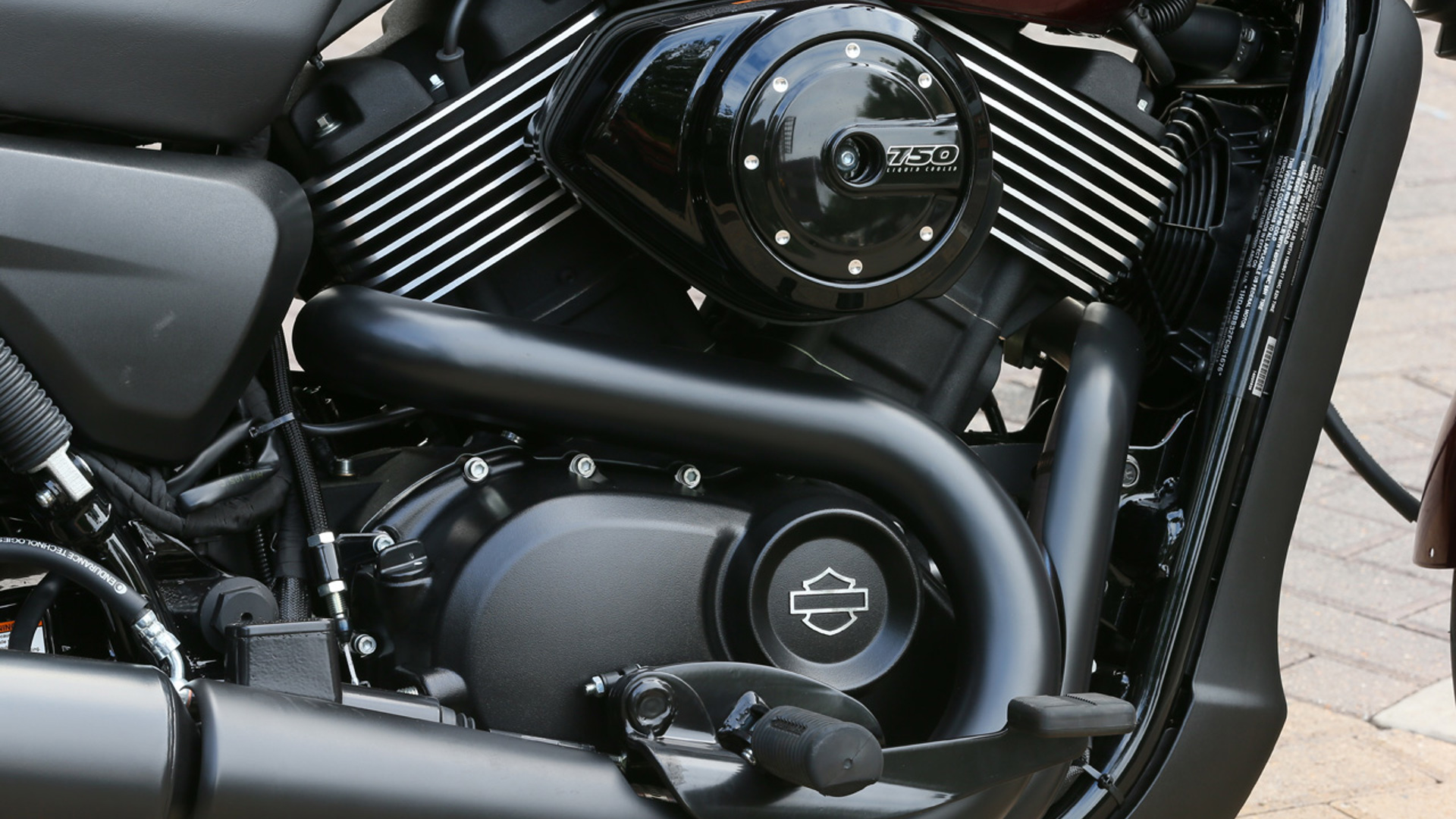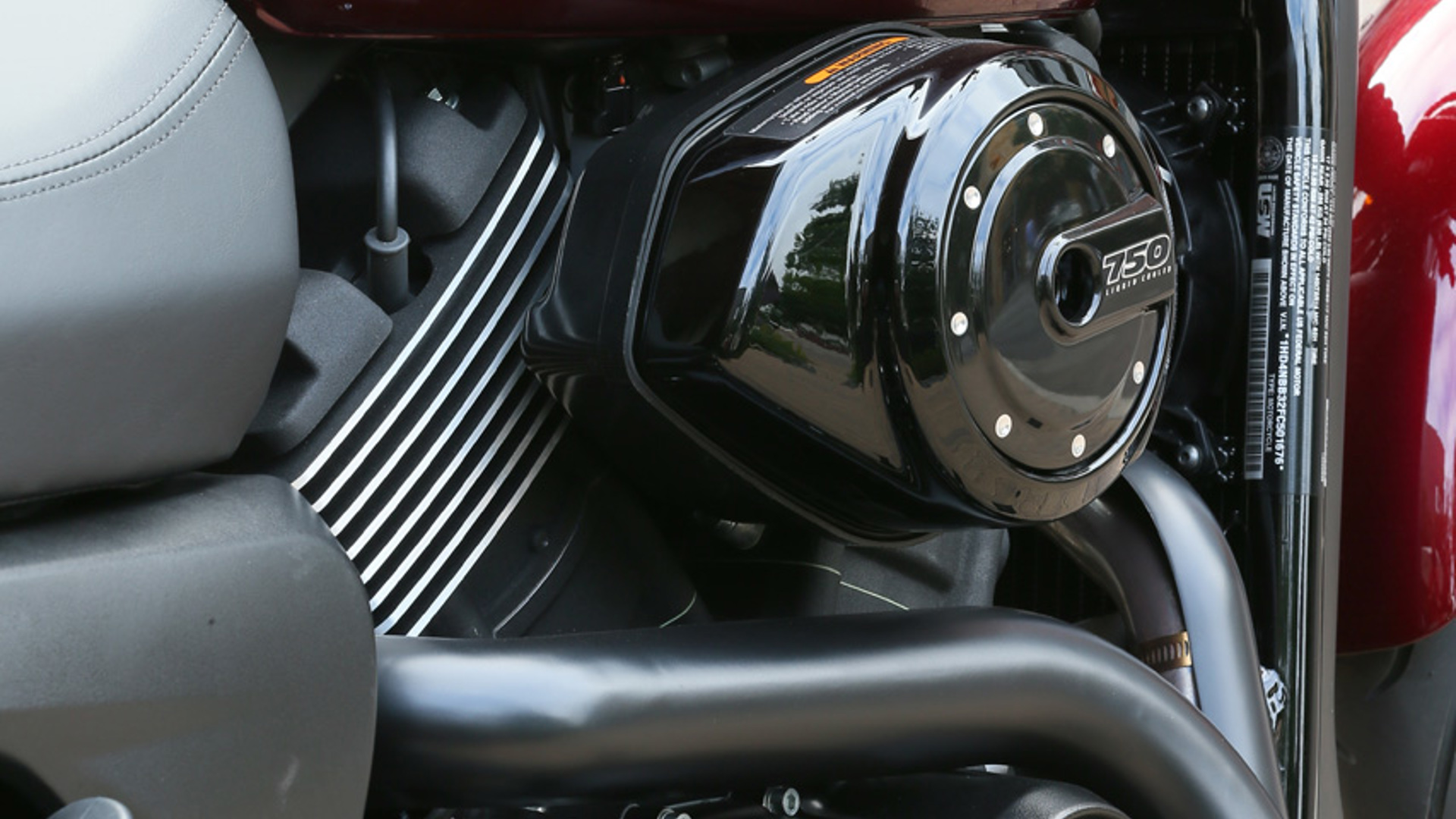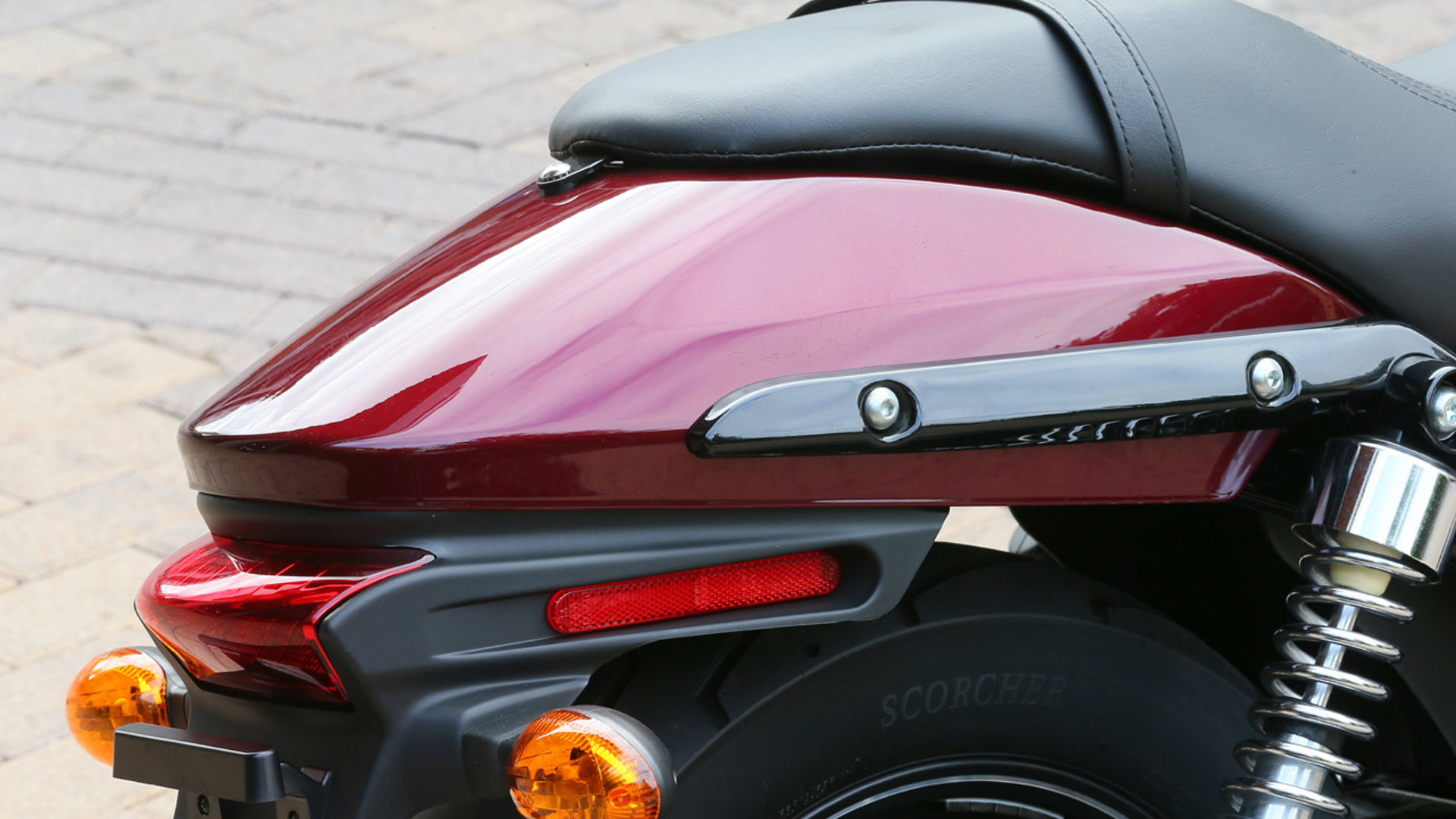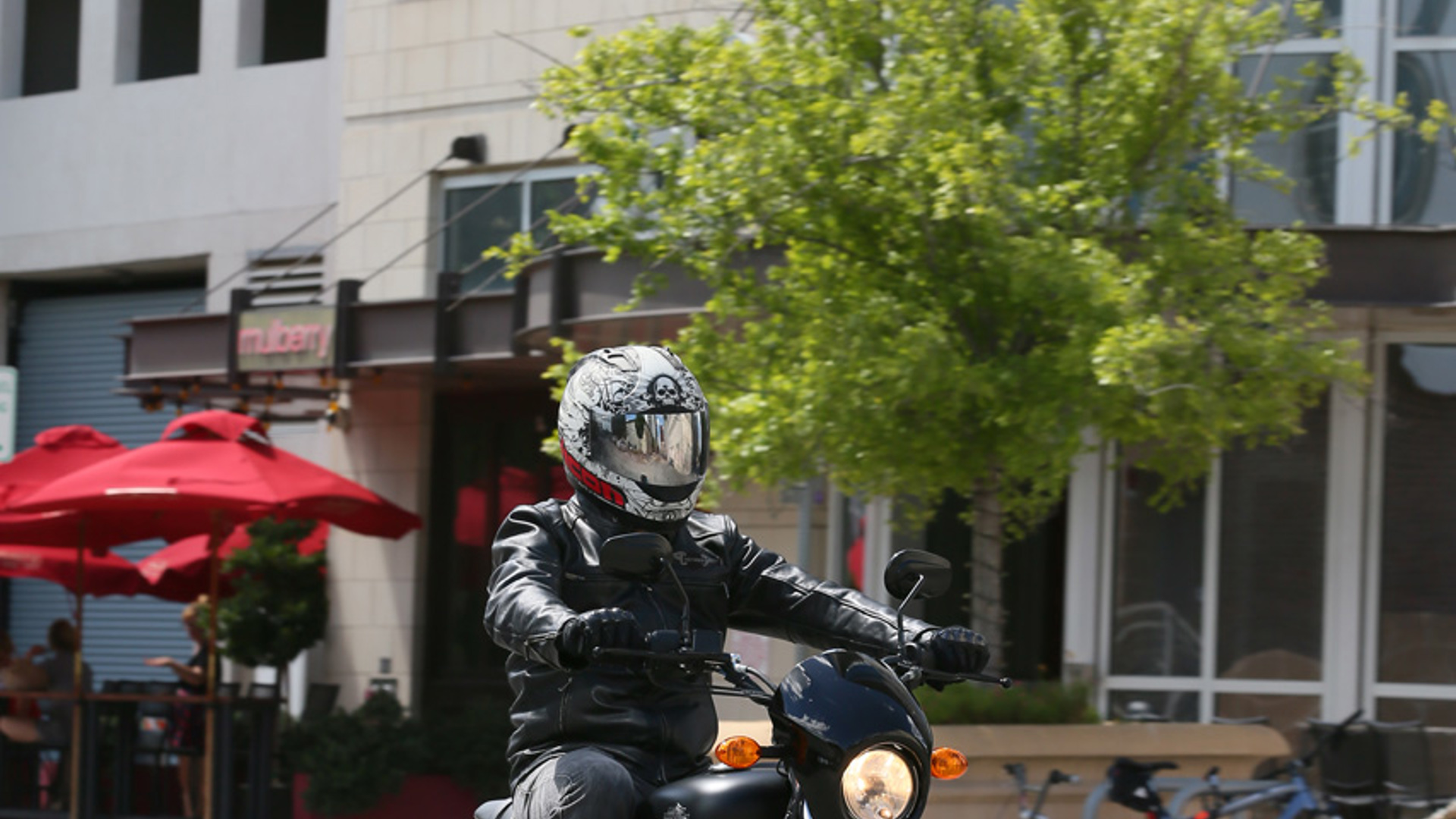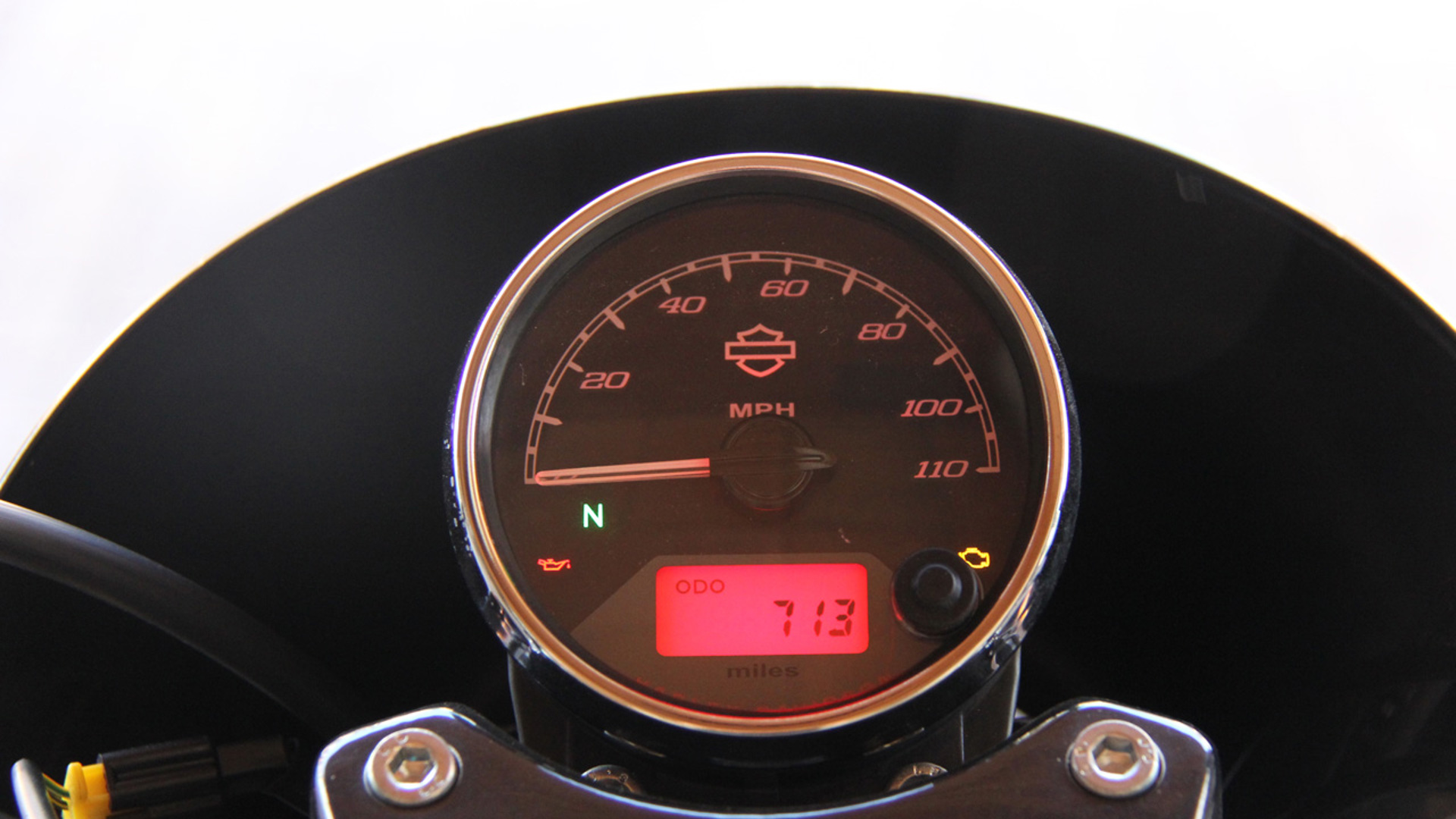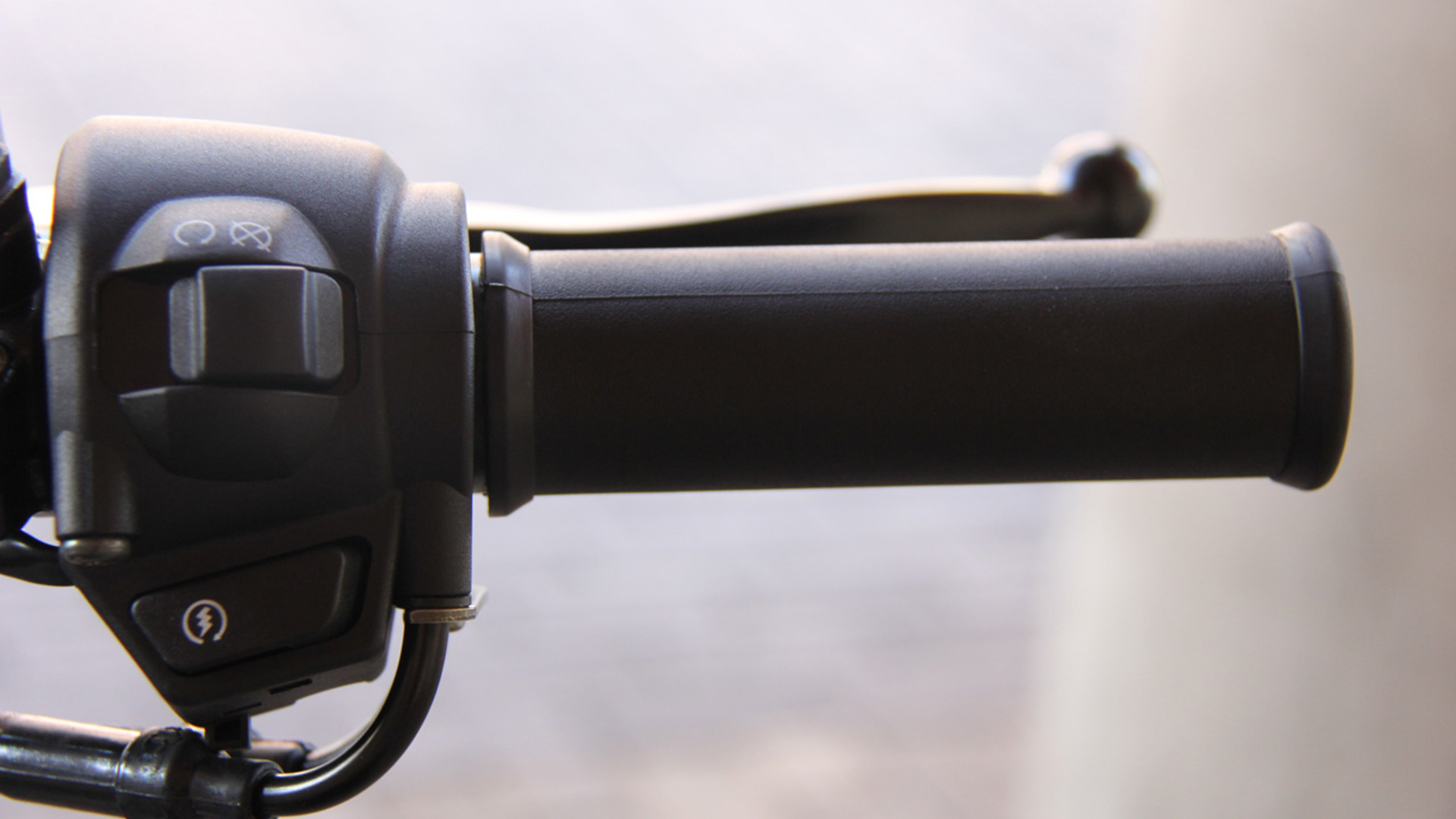Renowned for resting on past laurels, which albeit are substantial, Harley-Davidson has been on a tear recently by bringing new products and innovations to market that were both long overdue and completely unexpected. Coinciding with the 110th birthday celebrations, Project Rushmore struck a razor thin balance of updating the stale touring lineup without alienating the faithful masses. Then, completely out of left field came Project Livewire, an electric motorcycle that people will actually enjoy riding and won’t be embarrassed to be seen doing so. The unveiling of the Harley-Davidson Street 750 may not seem revolutionary by the same standards, but rest assured it represents a paradigm shift for the Milwaukee bike builder.
The all-new Street XG750 is certainly not what most people would expect from Harley-Davidson. Their first all-new motorcycle since they released the revolutionary V-Rod 14 years ago, the Street marks a bold departure from tradition. In order to critique the Street objectively, all preconceptions and expectations need be left at the door. This isn’t merely a smaller Sportster as I had initially expected when I was initially exposed to images of the bike. While it may be visually inspired by the 1977 XLCR Café Racer designed by Wille G. Davidson himself, this is a new motorcycle for a new audience.
It is becoming increasingly difficult to succeed on a global scale with a local focus so diversification is imperative. The prosperity of foreign countries featuring large, fast-growing and geographically-concentrated populations with expendable income is far too enticing to resist for companies seeking larger profits and Harley is no exception.
The bar and shield is among the most recognizable brands in the world, holding a great deal of equity not only in North America, but all around the world. The Americana mystique of a big booming V-Twin may be held in high regard in other parts of the world, but it is likely not remotely practical, or financially feasible in markets where two wheeled vehicles outpace their four-wheeled counterparts. On many parts of the globe, riding a motorcycle isn’t a luxury, it is a necessity. Enter the Street 750, the first true global Harley that was developed by sourcing input from over 3,700 customers in 10 countries across three continents. Designed for aforementioned emerging markets where space is at a premium, quality fuel may be hard to come by and the climate may be extreme, the Street is relatively small at 226 kg, nimble, narrow and liquid-cooled. The new Revolution X V-Twin is a belt-driven 60-degree SOHC powerplant available in 500 and 750cc displacements. Both utilize the same six-speed transmission, block and stroke but differ in bore size.
Existing Hog riders will cringe and cry foul at many of the Street’s design elements. As it was designed with a new rider in mind, the Street does away with other familiar conventions like the legendary dual turn signal switches in favour of a single switch on the left handlebar. Frustratingly, the switch isn’t self-cancelling. Those familiar with Harley's traditional controls will take some time to become acclimatized to the setup.
Many companies offer a selection of vehicles unique to particular markets around the globe, so why wasn’t the Street built for export only? Harley has been working harder than most manufacturers to attract the fairer sex to the sport and the Street is a (relatively) light and easy bike to maneuver. The powers that be also believe that it could also be an opportunity to attract new, younger riders here in North America who may be intimidated by the stature or price tag of existing models. This tiered product offering is a popular marketing strategy designed to get customers into the family and then keep them, a tactic developed by General Motors to get people driving Chevrolets but dreaming about the day they would be successful enough to buy a Buick or Cadillac.
Since its inception in 1957, many a rider has cut their teeth on the perennial entry-level Sportster, but its suspension isn’t exactly forgiving for novice riders and not everyone enjoys having the fillings shaken out of their teeth when they hit a pothole. The Street on the other hand is incredibly accessible and far more forgiving, offering twice the suspension travel of the Sportster.
Firing up a fleet of V-Twins in unison on a busy city street would normally result in setting off car alarms and dirty looks from strangers but the 749cc powerplant is smooth and inoffensive. The unfamiliar idle emits more of a hum than a rumble and even hitting the end of the throttle won’t scare the neighbours, which I’m sure is influenced by the noise pollution regulations in the target markets. Acceleration is torquey but docile with adequate pop in every gear, even up to triple digit highway speeds. I once purchased a five-speed Honda Shadow VT750 Aero and almost immediately sold it because it was so lethargic but engine mapping and gear ratios seem far better sorted on the XG750.
Shifting the six-speed transmission is crisp and it’s easy to find neutral. Clutch feel is intuitive and engagement is predictable, although late in the release which was challenging for riders with smaller hands, but they’ve obviously got bigger problems to worry about. One of several shortcomings however is the lack of immediacy felt during braking. The single front disc feels slow to respond, while activating the rear brake required me to nearly hyper-extend my right ankle and had the feedback of stepping deep into a warm cow patty. The mirrors were essentially for show since they were positioned so close to me that the only view I had was of my own shoulders.
I recognize that this bike isn’t targeted at m 6’ frame but I did find the ergonomics in need of some tweaking. Handlebars sit at an uncomfortable angle while the foot pegs were set an awkward distance from the 25.7-inch saddle, although four seat options are offered in the laundry list of over 100 accessories available – making it a veritable blank canvas for customization. Chopper, Café Racer – your choice.
Canadian pricing will be announced shortly as units roll into showrooms but US pricing for the 750 is $7,499 with the 500 tipping the register at $6,799. This accessible price tag is achieved by foregoing options like ABS and unfortunately several other glaring shortcomings to fit and finish, which Harley has become known for excelling at in recent years. Clumsy yellow wiring harnesses sit in plain view exposed to the elements, hardware that you would expect to be metal is constructed of plastic and upon returning from a 100 km ride I noticed that half of the front fork gaiters were sitting at half-mast like a lineup of slumping gym socks. While concessions were clearly made to achieve the price point, it is easy to see that the priorities were placed on engine development as it feels properly sorted and well-engineered upon first impressions.
I remember feeling pure, unadulterated disgust and visceral anger when Porsche first unveiled their Cayenne SUV in 2001. How could one of the world’s most renowned sports car companies betray their roots and build a vehicle for suburban mothers to pick up their kids from soccer practice? Well, Porsche has sold an exorbitant amount of Cayennes since 2003 and in the meantime invested those funds into building even better sports cars that now set the standard for innovation and performance. The Street 750 is smooth, predictable and agile - particularly at low speeds which will come in handy where they plan on selling the most. If this strategy allows Harley to convince more riders to embrace motorcycling and advantageously invest the profits into the research and development of future products, who am I to argue? The Street 750 won’t attract existing Harley owners, but that was never the point.
